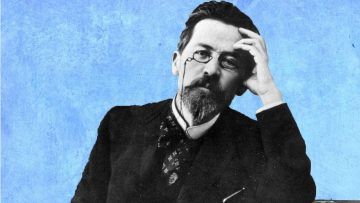Pauline Chen in The New York Times:
 Weathered, wiry and in his early 60s, the man stumbled into clinic, trailing cigarette smoke and clutching his chest. Over the previous week, he had had fleeting episodes of chest pressure but stayed away from the hospital. “I didn’t want to get the coronavirus,” he gasped as the nurses unbuttoned his shirt to get an EKG. Only when his pain had become relentless did he feel he had no choice but to come in. In pre-pandemic times, patients like him were routine at my Boston-area hospital; we saw them almost every day. But for much of the spring and summer, the halls and parking lots were eerily empty. I wondered if people were staying home and getting sicker, and I imagined that in a few months’ time these patients, once they became too ill to manage on their own, might flood the emergency rooms, wards and I.C.U.s, in a non-Covid wave. But more than seven months into the pandemic, there are still no lines of patients in the halls. While my colleagues and I are busier than we were in March, there has been no pent-up overflow of people with crushing chest pain, debilitating shortness of breath or fevers and wet, rattling coughs. But surprisingly, even months later, as coronavirus infection rates began falling and hospitals were again offering elective surgery and in-person visits to doctor’s offices, hospital admissions remained almost 20 percent lower than normal.
Weathered, wiry and in his early 60s, the man stumbled into clinic, trailing cigarette smoke and clutching his chest. Over the previous week, he had had fleeting episodes of chest pressure but stayed away from the hospital. “I didn’t want to get the coronavirus,” he gasped as the nurses unbuttoned his shirt to get an EKG. Only when his pain had become relentless did he feel he had no choice but to come in. In pre-pandemic times, patients like him were routine at my Boston-area hospital; we saw them almost every day. But for much of the spring and summer, the halls and parking lots were eerily empty. I wondered if people were staying home and getting sicker, and I imagined that in a few months’ time these patients, once they became too ill to manage on their own, might flood the emergency rooms, wards and I.C.U.s, in a non-Covid wave. But more than seven months into the pandemic, there are still no lines of patients in the halls. While my colleagues and I are busier than we were in March, there has been no pent-up overflow of people with crushing chest pain, debilitating shortness of breath or fevers and wet, rattling coughs. But surprisingly, even months later, as coronavirus infection rates began falling and hospitals were again offering elective surgery and in-person visits to doctor’s offices, hospital admissions remained almost 20 percent lower than normal.
…Some experts have pointed to patients’ overwhelming fear of contagion as a reason for the drop in the numbers seeking hospital care. But the patients in the study who had the greatest persistent drop in hospitalization were those with acutely worsening asthma or emphysema, pneumonias, sepsis, strokes and even heart attacks, all illnesses where hospitalization is generally not optional.
More here.

 What’s it like to be a cat?
What’s it like to be a cat?  Timothy Larsen over at the LARB:
Timothy Larsen over at the LARB: Kathleen Tyson over at the Official Monetary and Financial Institutions Forum:
Kathleen Tyson over at the Official Monetary and Financial Institutions Forum: Gilad Edelman in Wired:
Gilad Edelman in Wired: Salomé Viljoen in Phenomenal World:
Salomé Viljoen in Phenomenal World: Raphaële Chappe and Mark Blyth debate Sebastian Mallaby in Foreign Affairs (registration required):
Raphaële Chappe and Mark Blyth debate Sebastian Mallaby in Foreign Affairs (registration required): “I have a crazy new way of writing poems,” John Berryman wrote to illustrator Ben Shahn in January 1956. He had indeed hit on something crazy and new: an 18-line structure he ended up calling his “
“I have a crazy new way of writing poems,” John Berryman wrote to illustrator Ben Shahn in January 1956. He had indeed hit on something crazy and new: an 18-line structure he ended up calling his “ W
W No writer understood loneliness better than
No writer understood loneliness better than  Ah, election season. There’s a patriotic buzz in the air. Bumper stickers and lawn signs all over the neighborhood. Now comes the time when we check the location of our polling places, make a plan to vote—and pack a “go bag” in case we need to take to the streets in sustained mass protest to protect the integrity of the vote count. That last one is not something you’d expect to be doing in the United States, but things are different in the
Ah, election season. There’s a patriotic buzz in the air. Bumper stickers and lawn signs all over the neighborhood. Now comes the time when we check the location of our polling places, make a plan to vote—and pack a “go bag” in case we need to take to the streets in sustained mass protest to protect the integrity of the vote count. That last one is not something you’d expect to be doing in the United States, but things are different in the  Kazim Ali’s latest book of poems is born out of our collective existential crisis. How do we continue to survive “in a world governed by storm and noise”? Creating an ingenious form on the page, Ali uses sound to give us a sort of research project that grapples with this crisis of survival over time. But the project’s beauty manifests from the impossibility of its findings. After all, how is one supposed to answer the colossal question of existence?
Kazim Ali’s latest book of poems is born out of our collective existential crisis. How do we continue to survive “in a world governed by storm and noise”? Creating an ingenious form on the page, Ali uses sound to give us a sort of research project that grapples with this crisis of survival over time. But the project’s beauty manifests from the impossibility of its findings. After all, how is one supposed to answer the colossal question of existence? Hydraulic fracturing — the controversial oil and gas extraction method usually called “fracking” — has divided Democrats and the political left for a decade now. Many in the environmental community claim that allowing fracking is incompatible with climate action. Others, including Joe Biden and Kamala Harris, take a more nuanced position: During their respective debates, both Biden and Harris emphasized that a Biden-Harris administration would not ban fracking.
Hydraulic fracturing — the controversial oil and gas extraction method usually called “fracking” — has divided Democrats and the political left for a decade now. Many in the environmental community claim that allowing fracking is incompatible with climate action. Others, including Joe Biden and Kamala Harris, take a more nuanced position: During their respective debates, both Biden and Harris emphasized that a Biden-Harris administration would not ban fracking. From Jacob Blake, to George Floyd, to Breonna Taylor, 2020 has seen immense pressure to re-examine how the police interact with society. The oft-cited statistic that Black individuals are
From Jacob Blake, to George Floyd, to Breonna Taylor, 2020 has seen immense pressure to re-examine how the police interact with society. The oft-cited statistic that Black individuals are